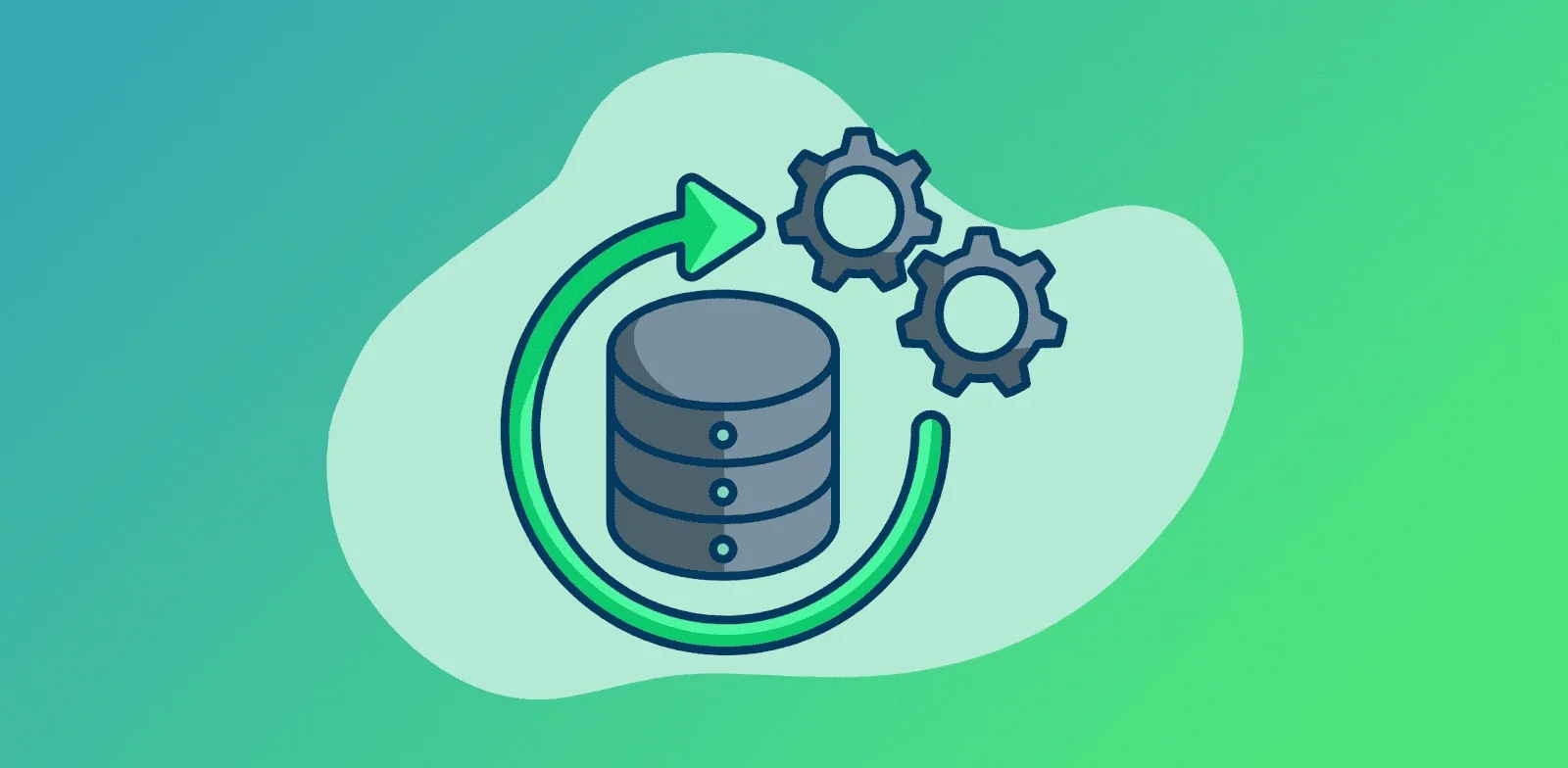Marketing attribution is all about data. Like many data-driven processes, small changes can make massive differences. When capturing and measuring attribution, the data falls into two categories: probabilistic or deterministic.
In this guide, we’ll explain the differences between these two types of data:
- The definitions of deterministic and probabilistic attribution.
- Key differences between the two.
- Why deterministic attribution is often the better approach.
Key takeaways
- Deterministic attribution offers the highest confidence in marketing performance by directly linking touchpoints to real users using unique identifiers.
- Probabilistic attribution can offer broader visibility in privacy-restricted environments, but its reliance on statistical modeling introduces uncertainty that can lead to costly misattribution.
- Investing in deterministic tracking pays off most in high-value, multitouch environments where accuracy directly impacts revenue.
What Is Deterministic Attribution?
Deterministic attribution tracks user interactions with absolute certainty using unique identifiers. These identifiers reveal the touchpoints a user interacted with and when.
For quick reference: Deterministic = certainty, not probably.
How Deterministic Attribution Works In Practice
Deterministic attribution only works with precise, identifiable user data to track and connect touchpoints across channels and devices. In practice, there are a few methods to capture this data.
User identification via logins or persistent IDs
When a user logs into a website, app, or service (using an email account, account ID, or CRM record), you capture a unique ID. You can also create unique IDs with specific UTM parameters.
With these identifiers, you can hash them (for user privacy) and store them. Your attribution solution can then recognize and track the user across sessions.
Cookie and device tracking
Third-party cookies aren’t the best solution. We’ve already made a guide on cookieless attribution. But that doesn’t mean cookies are off the table entirely. You can use first-party cookies (which are created by a website itself and can only be accessed by that domain) to assign a browser or device ID to a user.
If your business offers a mobile app, some can use device identifiers like IDFA (iOS) or GAID (Android).
Cross-platform integration
You can sync IDs across tools like CRMs, ad platforms, and analytics tools through integrations or APIs. Platforms like Meta or Google Ads can pass click IDs (`fbclid` or `gclid`) tied to the user record.
With these data collection methods in place, you can start identity matching and reconstructing user journeys by stitching events together.
Attribution solutions will build a profile for each user using their unique IDs that includes all touchpoints, from ad impressions to purchases for a full-funnel view of the customer journey.
When Deterministic Attribution Is Most Valuable
Since the identifiable data you collect is tied to real people (like login data), deterministic attribution is highly accurate.
In high-value B2B sales, this accuracy level is critical for insights you need to make high-stakes decisions. But this reasoning applies to any complex, multichannel or multitouch journey because it offers:
- Accurate cross-channel matching with stable identifiers.
- Consistent identity resolution by avoiding common issues like double-counting users or losing track across devices.
- Better personalization and segmentation for tailored campaigns.
- Better ROI insights since it identifies touchpoints that drive conversions.
- Compliance-friendly tracking with first-party data and consented identifiers makes it resilient to privacy changes.
As a quick summary, deterministic attribution provides clarity and confidence in environments where guessing isn’t good enough.
Book a Demo
Understand the precise impact of each marketing touchpoint and track “true” CAC, ROAS, and ROI on marketing spend with The Attribution Platform.
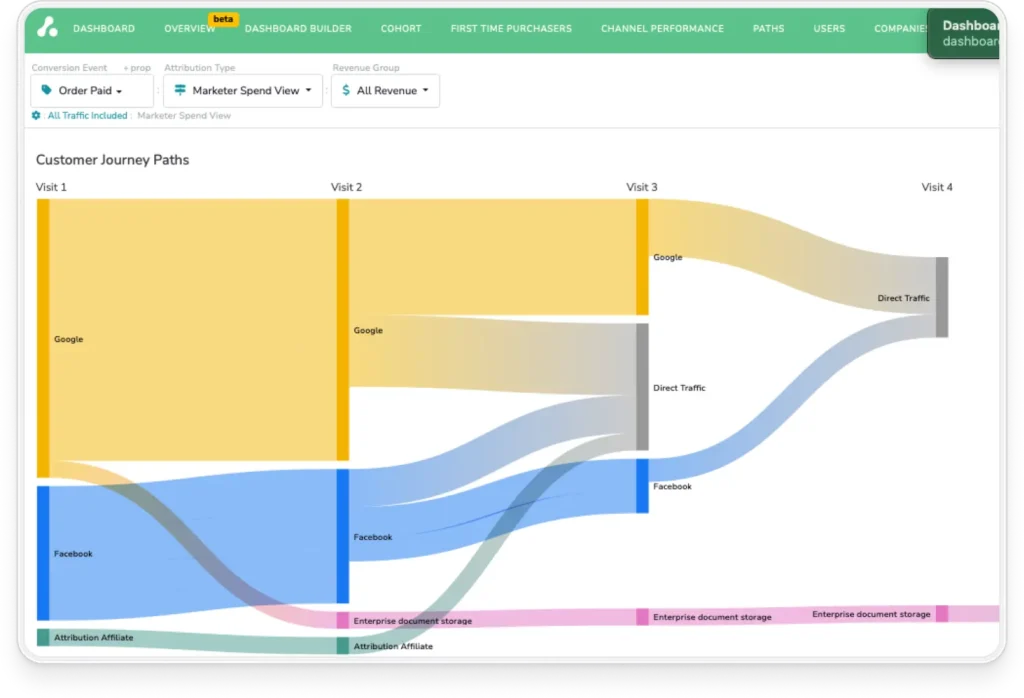
What Is Probabilistic Attribution?
Probabilistic attribution uses statistical modeling and machine learning to estimate user journeys. These models can estimate the likelihood of which touchpoints most likely influenced a conversion (rather than providing absolute certainty).
How Probabilistic Attribution Works In Practice
Unlike deterministic attribution, it doesn’t rely on specific user IDs. Instead of identifying individual users, these models group similar journeys and look for statistically significant trends.
In short, probabilistic attribution infers customer journeys using data patterns and statistical modeling across large datasets.
Path analysis with Markov chains
Markov models analyze a sequence of touchpoints leading to conversions. It calculates the probability of a user moving from one channel to the next and simulates the impact of “removing” a touchpoint. This approach is called the “removal effect.”
Machine learning algorithms
Machine learning algorithms like logistic regression, random forest, or deep learning models process massive datasets to identify patterns between touchpoints and outcomes.
The model assigns weights or applies probabilities to each interaction based on historical outcomes—like how often a YouTube ad click leads to conversions.
Probabilistic models like these analyze millions of customer journeys to identify which combinations and sequences of touchpoints correlate with conversions.
Since these models don’t use guaranteed IDs, they use “soft signals” to build confidence that different touchpoints or paths belong to the same user or cohort. Some of these signals include:
- IP address
- Browser fingerprinting (device type, OS, screen size, fonts, etc.)
- Geolocation data
- Time of visit
- Referral sources and click paths
- On-site behavior patterns (scroll depth, click sequences, dwell time)
It’s worth noting that collecting data from some of these signals can pose privacy risks. IP addresses, in particular, are considered personal data in GDPR and CCPA privacy regulations.
When Probabilistic Attribution Is Most Valuable
The main application of probabilistic attribution is when deterministic data is unavailable or incomplete.
For example, if a user visits a website from an Instagram ad on their phone, then visits again via a desktop browser from a Google search, with no login, deterministic methods might fail.
But probabilistic attribution can infer (based on soft signals) that it’s likely the same person and credit both channels. This method can offer insights across platforms and devices without guaranteed user IDs.
Key Differences Between Probabilistic and Deterministic Attribution
You’ve likely inferred the differences between probabilistic and deterministic attribution after reading the overviews. But here’s a quick-reference comparison chart:

Let’s break down the differences in detail.
Technical Implementation
The major differences between deterministic and probabilistic attribution are in the technical details.
Deterministic attribution requires complete user-level data (e.g., email, login, user ID), while probabilistic attribution relies on aggregated behavioral patterns and device/browser signals.
There are also differences between the two in terms of implementation complexity. If you have the infrastructure for deterministic data collection (i.e., CRM, login system, Customer Data Platform), setting up this data for attribution is straightforward, but requires tight platform integration. If the identifiers are stable, ongoing maintenance is also easier.
But with probabilistic attribution, it can be more complex because it needs large data volumes, modeling tools, and some machine learning expertise—especially if you want to customize the model. ML models also need to be regularly maintained, updated, and validated.
The last piece of technical differences is in cross-device and cross-channel tracking. For deterministic attribution, cross-channel linking is accurate when touchpoints share consistent user IDs, and the risk of duplication is low.
For probabilistic attribution, cross-channel linking is inferred from common behaviors across devices and channels. The risk of duplication is also quite high since multiple devices or browsers may be treated as separate users.
Accuracy and Confidence Levels
Deterministic attribution offers higher confidence compared to probabilistic attribution for a few reasons:
- The source of data is built on known identifiers.
- Since touchpoints are definitively tied to single, verified users, there is high linking certainty.
- The data directly connects actions to outcomes with minimal ambiguity.
In environments where user authentication is common, like SaaS platforms, E-Commerce, or other logged-in journeys, deterministic attribution easily beats probabilistic in accuracy and confidence levels.
There’s also the factor of the ever-present margin for error in probabilistic attribution models. The margin typically depends on model and training data quality, and the data is based on correlations and inferred behavior rather than direct user links.
Probabilistic attribution can be handy for trend reports, but less reliable for individual-level insights. For example, if two channels often occur together in conversion paths, the model may incorrectly assign more credit than deserved due to correlation—not causation.
If you rely solely on probabilistic data for decision-making, that can lead to misallocated spending if your assumptions in the model are flawed or if the data is biased, like in the example above.
A simple rule of thumb for deciding when statistical confidence is “good enough” is to use probabilistic models for high-level strategies and deterministic data for precision.
But it’s also worth noting that the reliability of both approaches differs depending on data volume. Deterministic attribution outperforms probabilistic with low data volume, but probabilistic models improve with more data.
In short:
- Deterministic = high accuracy and low coverage (without logins).
- Probabilistic = broader coverage, but with a margin of error.
Privacy and Compliance Considerations
Probabilistic attribution appears to offer more advantages in privacy-sensitive environments.
It normally operates with aggregated or pseudonymized data, and since it avoids storing personally identifiable information (PII), it can sometimes qualify as “privacy-preserving analytics.” This practice helps reduce exposure under privacy laws. However, as mentioned earlier, some regulations like GDPR still scrutinize fingerprinting techniques.
On the other hand, deterministic attribution uses PII data. This means when using it, you must gain explicit consent from users, have secure data storage, and practice lawful processing.
Without proper consent handling, deterministic tracking can expose companies to regulatory penalties. This means keeping track of consent management factors like:
- When you need consent (collecting PII, storing cookies, syncing third-party platforms).
- Consent type—which should be explicit, opt-in under GDPR and similar frameworks.
- Consent Management Platform (CMP) integration to manage consent regularly.
- Data subject rights require your consent management to support deletion, access, and correction of user data on request.
In terms of cookie usage, we’ve already mentioned how third-party cookie depreciation and iOS/browser privacy blocks have impacted tracking. Using first-party data offers a workaround, though probabilistic models can function with soft signals alone.
Why Deterministic Data Wins For Marketing Attribution
Even though deterministic data takes more effort to manage privacy compliance, the extra effort to apply strict controls is usually worth it. We’ll illustrate why by explaining the costs of uncertainty and highlighting scenarios where that extra effort pays off.
The Hidden Costs Of Probabilistic Uncertainty
Probabilistic models estimate which touchpoints probably influenced a conversion. But if those estimates are wrong, the consequences ripple across your entire strategy.
You might over-credit low-impact channels, inflating spend on underperformers, and undervalue high-converting channels, starving them of budget. These errors lead to poor campaign optimization, reducing ROI and impacting long-term growth.
Here’s an example. Let’s say:
- Your business spends $50,000/month across five marketing channels.
- A probabilistic model misattributes just 10% of conversions, which is not a wild margin of error.
- That’s $5,000/month misallocated, or $60,000/year.
In complex B2B or high-ticket B2C journeys, customers might engage with 5–10+ touchpoints over weeks or months. Probabilistic models must infer influence across them, even when users switch devices or channels. Each inference carries a small uncertainty margin, but across an entire journey those margins stack up, making the final attribution even more fragile.
The final hidden cost of probabilistic models is the risk of statistical bias. The models are only as good as the data and assumptions you build them on. But bias can creep in through a few ways:
- Frequency bias can over-credit channels that appear in most journeys.
- Recency bias can give too much credit to channels that appear later.
- Data gaps mean channels without good tracking don’t get credit.
- Modeling bias means that if a model is trained on (for example) last-click conversions, it can undervalue early touchpoints.
These biases can lead to systemic and long-term misjudgments, deeply skewing your strategy.
When Extra Effort For Deterministic Tracking Pays Off
Yes—deterministic tracking can be resource-intensive, but in plenty of cases, it offers significant strategic value and ROI, including:
- High LTV products or services (SaaS, FinTech, etc.)—even minor attribution gains can boost lifetime revenue.
- B2B journeys with long sales cycles—you get precise lead scoring and account-based attribution with real contact mapping.
- Multichannel paid campaigns—it can help allocate budget more precisely across Google, Meta, email, etc.
- Subscription-based models—it can improve attribution to retention-driving channels, not just acquisition.
Let’s illustrate the point with a couple of examples of ROI improvements with deterministic models:
For a B2B SaaS company:
- Average deal value: $12,000
- Monthly leads: 500
- Conversion rate: 4% = 20 new customers/month
- Suppose 10% of revenue is misattributed due to attribution errors. That leads to $24,000/month spent on misaligned strategy.
You can correct this with deterministic data. Even shifting just 5% of the misallocated budget could lead to an extra new customer per month, or $12,000/month ROI.
For a DTC E-Commerce brand:
- Monthly ad spend: $100,000
- ROAS goal: 4.0 ($400,000)
- Real ROAS may be 3.6 ($360,000), or $40,000 in missed revenue, with probabilistic gaps.
- Deterministic tracking shows exact purchase paths and corrects spending. Even 5–10% better ROAS is worth $18–36K/month.
You might not know where to start with deterministic tracking. If so, we’d suggest a phased approach prioritizing data stability and business impact:
Phase 1: Foundation
Implement first-party tracking like cookie banners, consent platforms, and update privacy policies and terms. Then, capture user logins and assign unique IDs via a CRM or CDP, and start basic UTM tracking for email campaigns and website behavior.
Phase 2: Expansion
Integrate CRM, ad, and analytics platforms (e.g., Salesforce, Google Analytics 4, Meta). Then, stitch multichannel touchpoints using deterministic rules.
You might notice gaps in channel attribution, such as missing UTM parameters and unlinked form submissions. Fix those before moving into the last phase.
Phase 3: Optimization
You should be able to build dashboards for channel-specific attribution confidence and use those insights to optimize budget allocations as well as marketing messaging and creatives.
How The Attribution Platform Delivers Deterministic Insights
Setting up your data for deterministic attribution insights doesn’t need to be a headache. You also don’t need to build a bespoke attribution model in-house. The Attribution Platform is a dedicated attribution solution that can simplify the process and make getting insights easier.
End-To-End Journey Tracking
The Attribution Platform captures and connects touchpoints across the entire customer journey with its suite of over 30 integrations with popular business and marketing tools.
When a visitor arrives at a tracked page and the Attribution Platform’s JS script loads properly, a visit will appear on your dashboard. The platform will capture the referring and destination URL and automatically set an anonymous ID for the visitor. This allows the platform to track future visits as well.
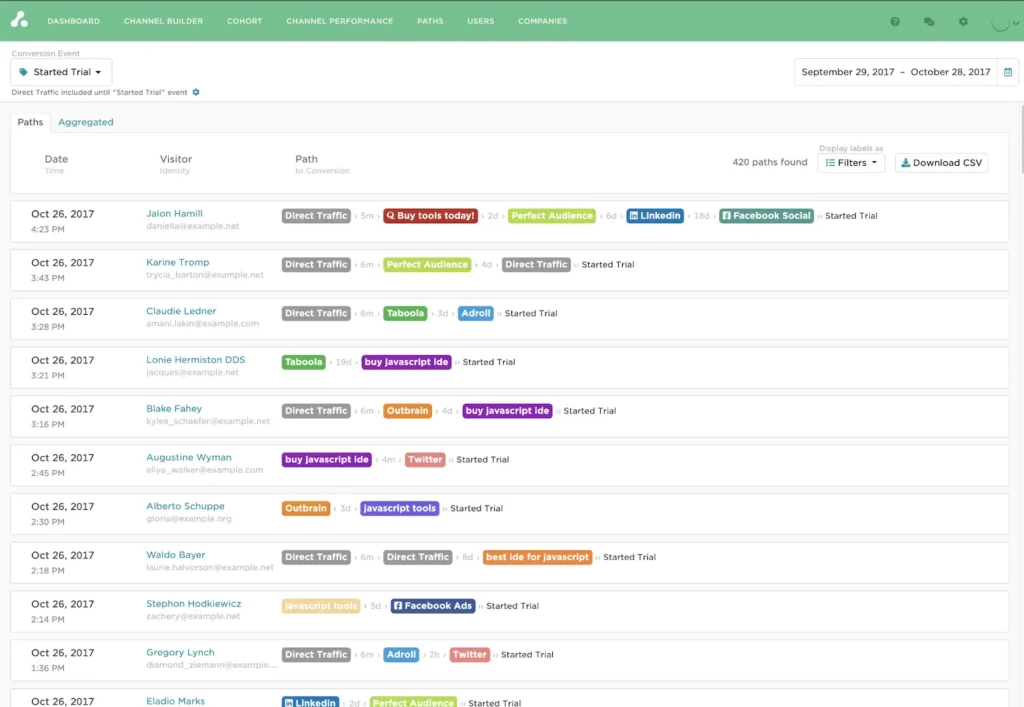
The Attribution Platform will use the referring and destination URL to filter your ads. When you integrate your ad platforms, it will auto-tag your ads with a unique parameter. The platform will look for this parameter to tie spend with visits and ultimately build your model. This model then illustrates the complete picture of each customer’s path to conversion, alongside your cost data.
Transparent ROI Calculation
The Attribution Platform was built specifically to offer marketers a clear view of return on ad spend (ROAS) and by extension, revenue attribution. It doesn’t rely on third-party modeling data for visits or revenue. It can collect ad spend values from integrations (updated every 24 hours) or from manually uploaded spreadsheets.
The Attribution Platform connects this cost data with conversion values for precise ROI measurement. You can even drill down into the ROI of specific channels, campaigns, and ad-level performance with its dashboard.
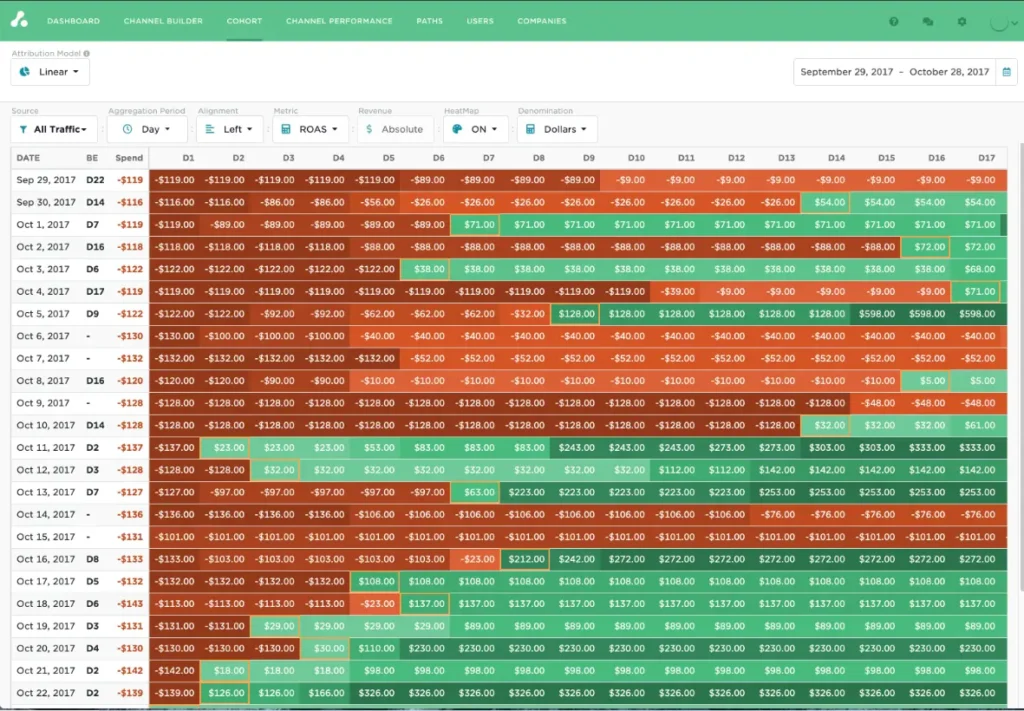
The cherry on top? The Attribution Platform is completely transparent. It doesn’t hide away the calculations behind its models, and you can audit the raw data to monitor accuracy and gain confidence in making budgeting decisions.
Sign up and try Attribution today — pinpoint CAC by channel, audit funnels and conversion rates, scale revenue-driven content marketing, measure affiliate LTV and CAC (and more).
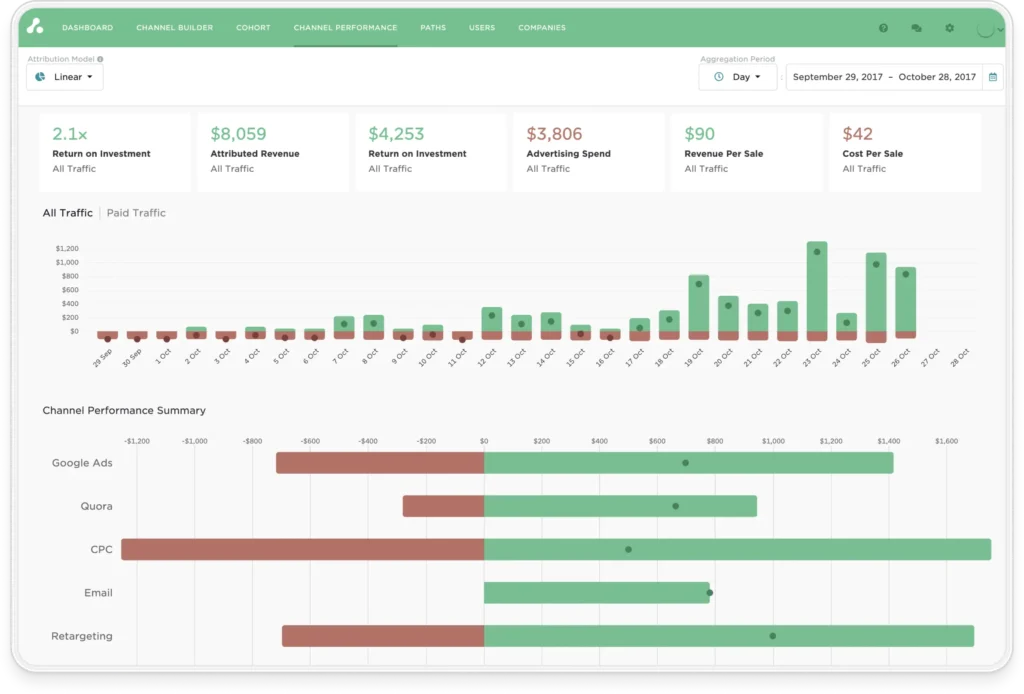
Probabilistic vs. Deterministic Attribution FAQs
What is the main benefit of deterministic attribution?
The main benefit of deterministic attribution is its precision. It offers high-confidence insights by directly linking marketing touchpoints to real, identifiable users.
What data do I need to implement deterministic attribution?
You need unique user identifiers (like emails or login IDs), tagged marketing touchpoints, and integrated tracking tools (like a CRM, analytics platform, and first-party cookies) to link actions to specific individuals across channels.
What makes The Attribution Platform different from other attribution solutions?
The Attribution Platform tracks cost data on every click and visit to monitor real-time CAC, CAC Payback, and LTV:CAC metrics at a granular level.
